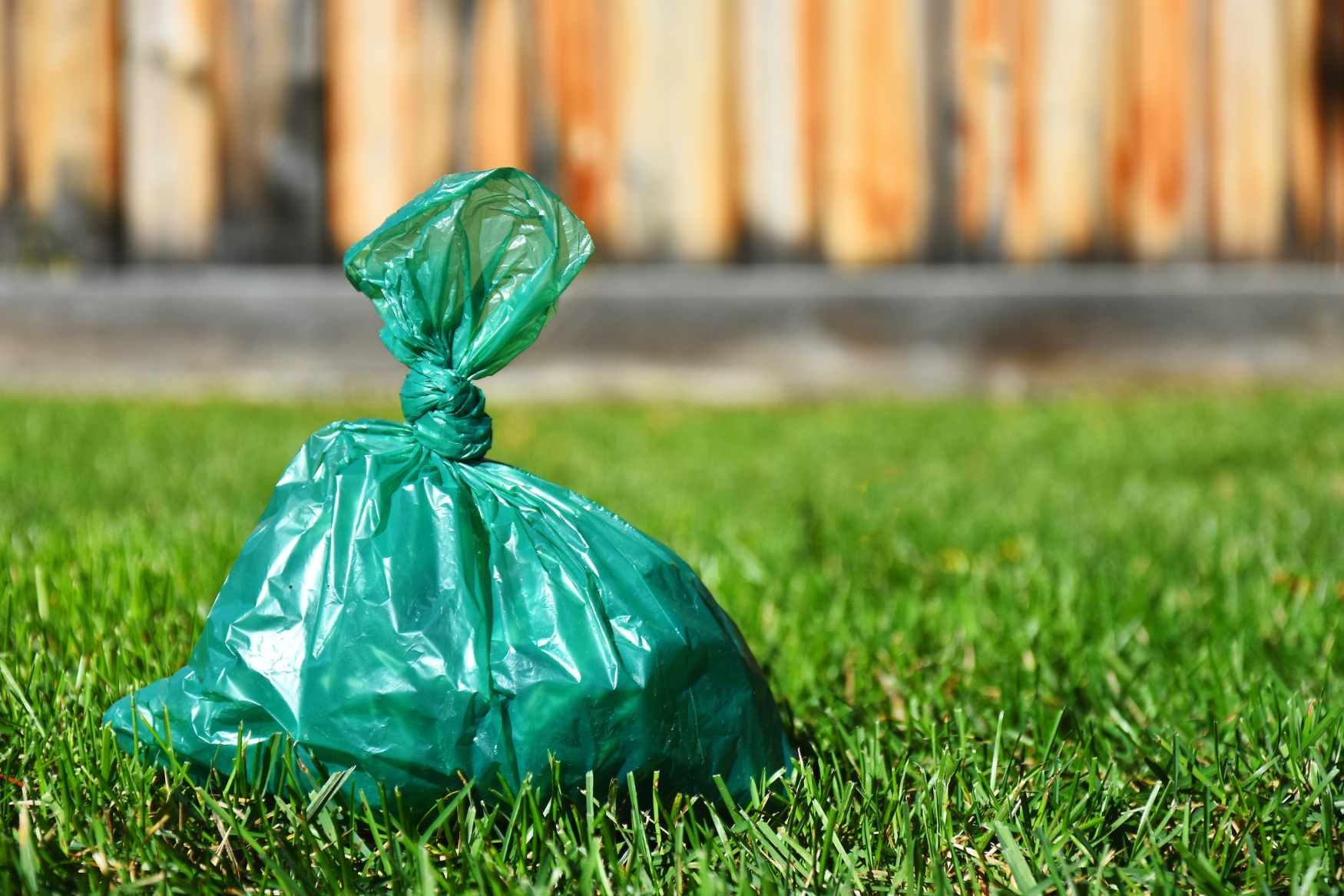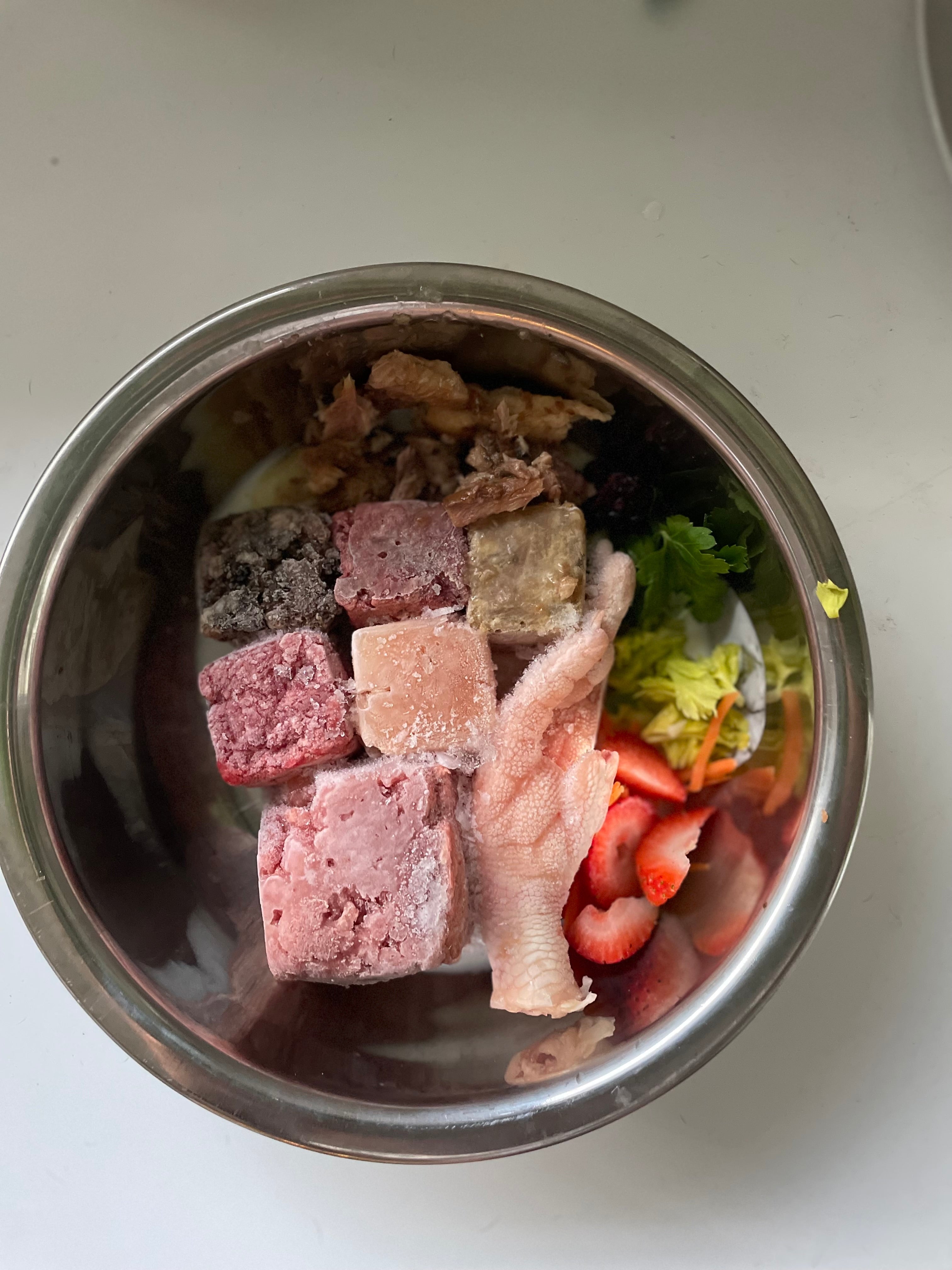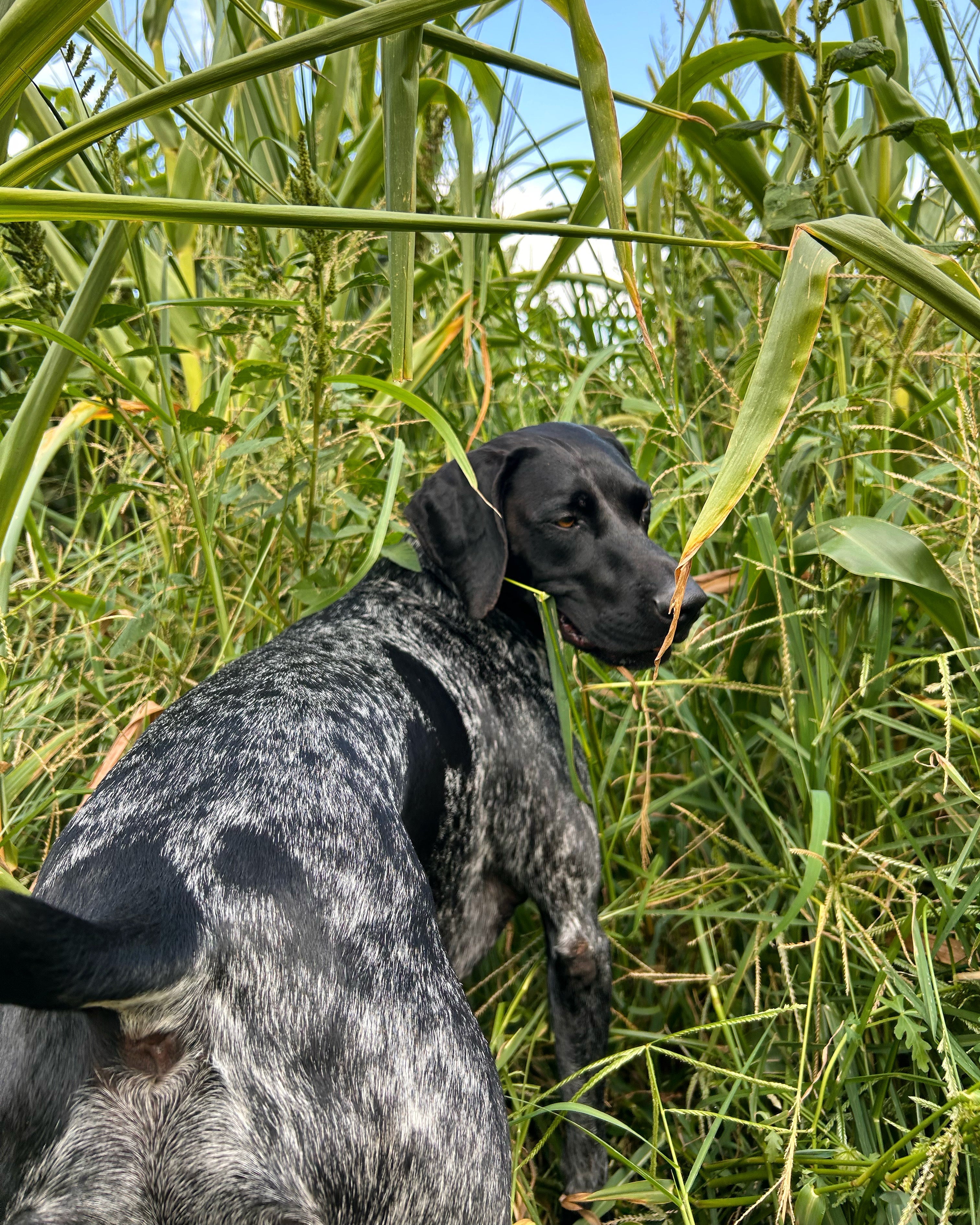
Understanding and Managing Diarrhea in Dogs that eat a Raw Diet: Causes, Remedies, and When to Seek Help
Diarrhea in raw fed dogs is a common concern and can stem from a variety of causes. While many episodes are mild and self-limiting, it’s important to understand what might be behind your dog’s upset stomach and how to respond safely and effectively.
Why Does My Dog Have Diarrhea?
Diarrhea in raw fed dogs can occur for several reasons. One frequent cause is a sudden change in diet, such as rotating proteins or switching to a new brand of food. Other times, it can be too much of one thing as well (especially organs which tend to be nutrient dense). Dogs may need time to adjust, as their digestive systems must produce the necessary enzymes to break down unfamiliar proteins (I've also seen that most puppies tend to frequently get diarrhea on a raw diet). In my own experience with my dog Louie, even switching grocery stores (sourcing) - and thus potentially sourcing meats from different suppliers, can trigger digestive upset.
However, not all cases of diarrhea are related to food. External factors, such as exposure to contaminated water at the dog park, sharing communal water bowls, ingesting feces from other dogs, or even treats from well-meaning strangers, can introduce harmful bacteria or parasites into your dog’s system. Swimming in natural bodies of water, like the ocean or ponds with high bacterial loads, can also contribute to gastrointestinal distress.
Addressing Diarrhea for Raw Dog Feeders
When Louie develops diarrhea, I follow a consistent, gentle approach that supports his digestive health and helps restore balance.
-
Probiotics:
I always add probiotics (in food form) to Louie’s diet, typically in the form of plain, unsweetened kefir or yogurt. Probiotics help replenish beneficial gut bacteria, which can be especially helpful after a dietary upset or exposure to pathogens. It's also a source of hydration. This is offered separately from his regular food. -
Soluble Fiber:
To help firm up stools, I sprinkle ground flax meal, chia seeds, or psyllium husk over the kefir/yogurt. These ingredients are rich in soluble fiber, which absorbs excess water in the intestines and can help normalize bowel movements. Because they're water absorbing, they also help to firm/toughen the loose or soft stool. -
Milk Thistle:
My go-to herb for digestive support is milk thistle. I use the capsule form, opening it and sprinkling the contents over his kefir or yogurt. Milk thistle is known for its calming effect on the digestive system and its ability to support liver health, which is closely linked to digestion. There are a few more herbs that I used to give him but I found that Louie responds best to Milk Thistle.
I reintroduce Louie’s regular food. after doing the three above as his first meal since the diarrhea. If diarrhea persists, I consider the possibility of parasites such as worms.
-
Natural Remedies for Worms:
I prepare a meal with crushed pumpkin seeds, raw shredded carrots, and a splash of apple cider vinegar. These ingredients are gentle on the stomach and may have therapeutic effects if parasites are present. After a couple of meals, I add a small amount of clover (adjusted for Louie’s size—he’s 61 pounds, so one medium or half a large clover for two meals).
When to Consult a Veterinarian
If diarrhea continues despite these measures (I give it two days), it’s important to consult your veterinarian. Persistent diarrhea can indicate a more serious underlying issue, such as infection, inflammatory bowel disease, or other systemic conditions. A fecal test is often the next step to identify the cause and guide appropriate treatment.
References
A Randomized, Double-Blind, Placebo-Controlled Trial on Synbiotic Supplementation and Diarrhea in Dogs
https://pmc.ncbi.nlm.nih.gov/articles/PMC5354029/
Acute Diarrhoea in Dogs and Cats: Causes and Faecal Analysis
https://www.veterinary-practice.com/article/acute-diarrhoea-in-dogs-and-cats-causes-and-faecal-analysis
Ullah, R., Nadeem, M., Khalique, A., Imran, M., Mehmood, S., Javid, A., & Hussain, J. (2016). Nutritional and therapeutic perspectives of Chia (Salvia hispanica L.). Journal of Food Science and Technology, 53(4), 1750–1758.
https://www.ncbi.nlm.nih.gov/pmc/articles/PMC4926888/
Buff, P. R., & Fahey, G. C. (2023). Perspectives on functional foods for improvement of canine health. Animal Feed Science and Technology, 300, 115660.
https://www.sciencedirect.com/science/article/pii/S1756464623003444
Kajla, P., Sharma, A., & Sood, D. R. (2015). Flaxseed—a potential functional food source. Journal of Food Science and Technology, 52(4), 1857–1871.
https://www.ncbi.nlm.nih.gov/pmc/articles/PMC4375225/
Fahey, G. C., Merchen, N. R., Corbin, J. E., Hamilton, A. K., Serbe, K. A., & Lewis, S. M. (1990). Dietary fiber for dogs: II. Iso-total dietary fiber (TDF) additions of divergent fiber sources to dog diets and their effects on nutrient intake, digestibility, metabolizable energy, and digesta mean retention time. Journal of Animal Science, 68(2), 422–434.
https://pubmed.ncbi.nlm.nih.gov/2325588/
de Godoy, M. R. C., Kerr, K. R., & Fahey, G. C. (2013). Alternative dietary fiber sources in companion animal nutrition. Nutrients, 5(8), 3099–3117.
https://www.ncbi.nlm.nih.gov/pmc/articles/PMC3775244/
Bosch, G., Verbrugghe, A., Hesta, M., Holst, J. J., van der Poel, A. F. B., Janssens, G. P. J., & Hendriks, W. H. (2008). The effects of dietary fibre type on satiety-related hormones and voluntary food intake in dogs. British Journal of Nutrition, 102(2), 318–325.
https://pubmed.ncbi.nlm.nih.gov/18377691/
Use of Milk Thistle in Farm and Companion Animals: A Review. Veterinary Sciences, 2022.
https://pubmed.ncbi.nlm.nih.gov/36302565/
Use of Milk Thistle in Farm and Companion Animals: A Review. Animals (Basel), 2023.
https://www.ncbi.nlm.nih.gov/pmc/articles/PMC11961297/


